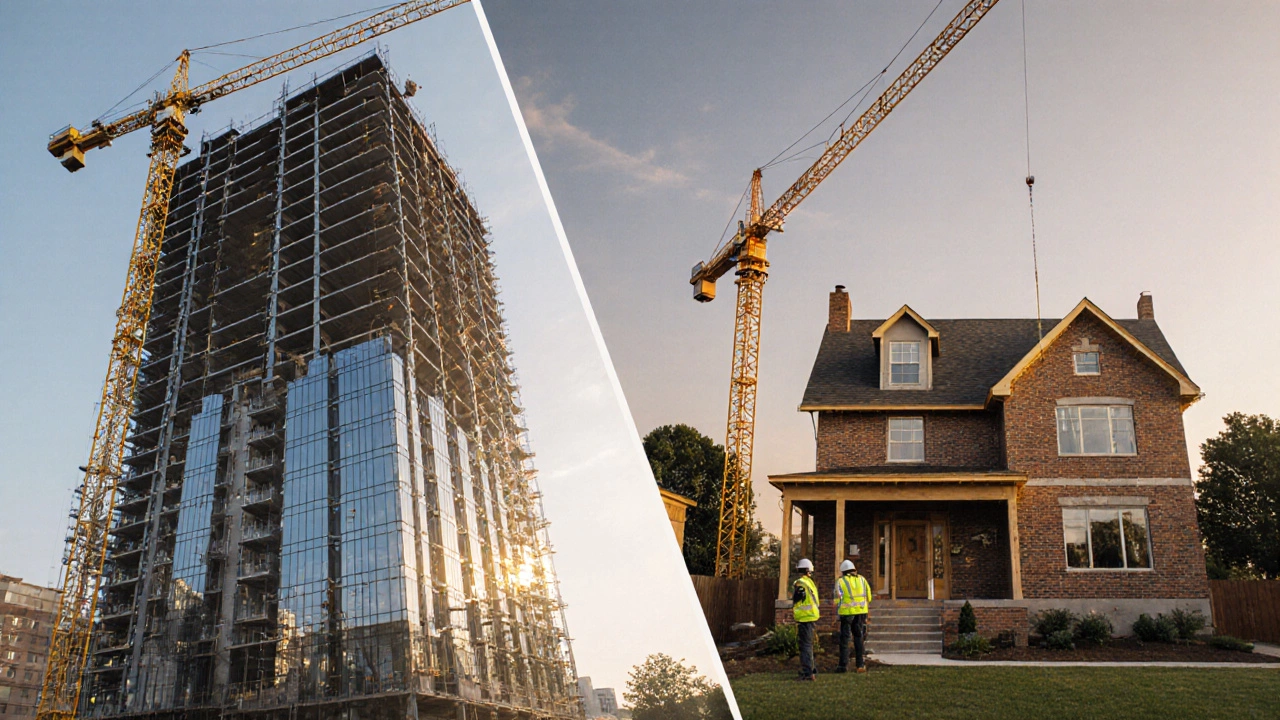Opposite of Commercial Construction: What It Means and Why It Matters
When examining the opposite of commercial construction, the term describes building projects that serve private homes, community facilities, or small‑scale enterprises rather than large profit‑driven developments. Also known as non‑commercial construction, it focuses on livable spaces, local needs, and often stricter zoning rules. Another core concept is residential construction, the process of building, renovating, or extending houses, apartments, and condos for personal occupation, which directly contrasts the high‑rise offices typical of commercial projects. civil construction, infrastructure work like roads, bridges, and utilities that supports both public and private use, also falls outside the commercial arena. Finally, architectural services, professional design and planning that guide non‑commercial builds from concept to completion, play a pivotal role in shaping these projects.
Key Differences to Consider
One major semantic triple is: the opposite of commercial construction encompasses residential construction. This relationship means that material choices, budgeting methods, and permitting processes differ significantly. Residential projects usually require low‑rise permits, energy‑efficiency standards, and homeowner association approvals, while commercial builds face larger scale fire codes and occupancy calculations. Another triple links civil construction to non‑commercial building: civil construction supports residential development by providing essential utilities and access roads. Understanding this link helps homeowners anticipate extra costs for site preparation and utility connections.
Architectural services add another layer. They require a deep knowledge of local building codes that differ between commercial and residential zones. For example, a kitchen remodel in a private house might need only a minor amendment, whereas a restaurant in a commercial block faces health‑department inspections and ventilation specifications. This distinction influences the fee structures of architects, who often charge a percentage of the residential build cost versus a flat fee for commercial contracts.
Construction types also create clear semantic connections. Mixed‑use construction can blend commercial and residential elements, but the opposite of pure commercial construction focuses on single‑use or low‑rise structures. Builders must therefore select structural systems—like timber framing for homes versus steel frames for offices—that match the project’s scale and load requirements. Knowing which construction type applies can prevent costly redesigns later on.
Profit margins highlight another useful contrast. While commercial construction companies often chase high‑volume contracts with tighter profit margins, residential and civil projects tend to have higher per‑unit margins but face more variable demand. This economic reality shapes how contractors price labor, source materials, and schedule work. For homeowners, it means negotiating on a more transparent price list and having the option to oversee parts of the build themselves to save money.
In practice, the opposite of commercial construction also dictates the timeline. Residential builds typically follow a shorter, more flexible schedule—permits, framing, and finishing can be completed within months, unlike the multi‑year timelines of skyscrapers. This faster pace allows for iterative design changes, such as adding a bathroom or extending a deck, without jeopardizing the overall project.
All these entities—residential construction, civil construction, architectural services, and construction types—interact to form a coherent picture of non‑commercial building. Below you’ll find a curated set of articles that dive deeper into budgeting, design tips, profit insight, and practical steps for anyone tackling the opposite of commercial construction.

